THE SARAGOSSA MANUSCRIPT. Genius movie from Poland
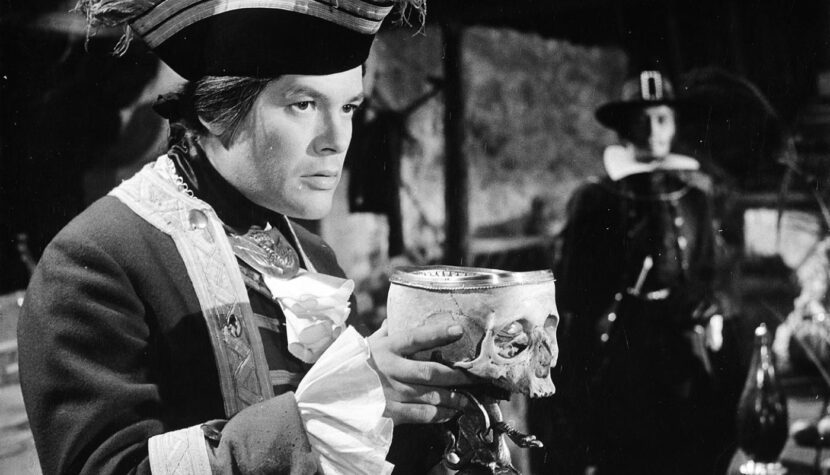
The Saragossa Manuscript director, Wojciech Jerzy Has never concealed that Luis Buñuel, one of the greatest mockers in the history of cinema, occupied a special place among his favorite directors. The Spaniard was reluctant to watch movies more than once. His attitude towards cinematography was generally ambivalent. One of his most cherished fantasies involved the pyre where all copies of his own films were burned… When Buñuel, with the considerable help of Jean-Claude Carrièr, wrote the autobiographical My Last Breath, on one of the final pages there was a mention of The Saragossa Manuscript by Wojciech Jerzy Has. The director admitted that he had watched the film by the Pole as many as three times and stated that it was definitely at the forefront of his cinematic ranking.
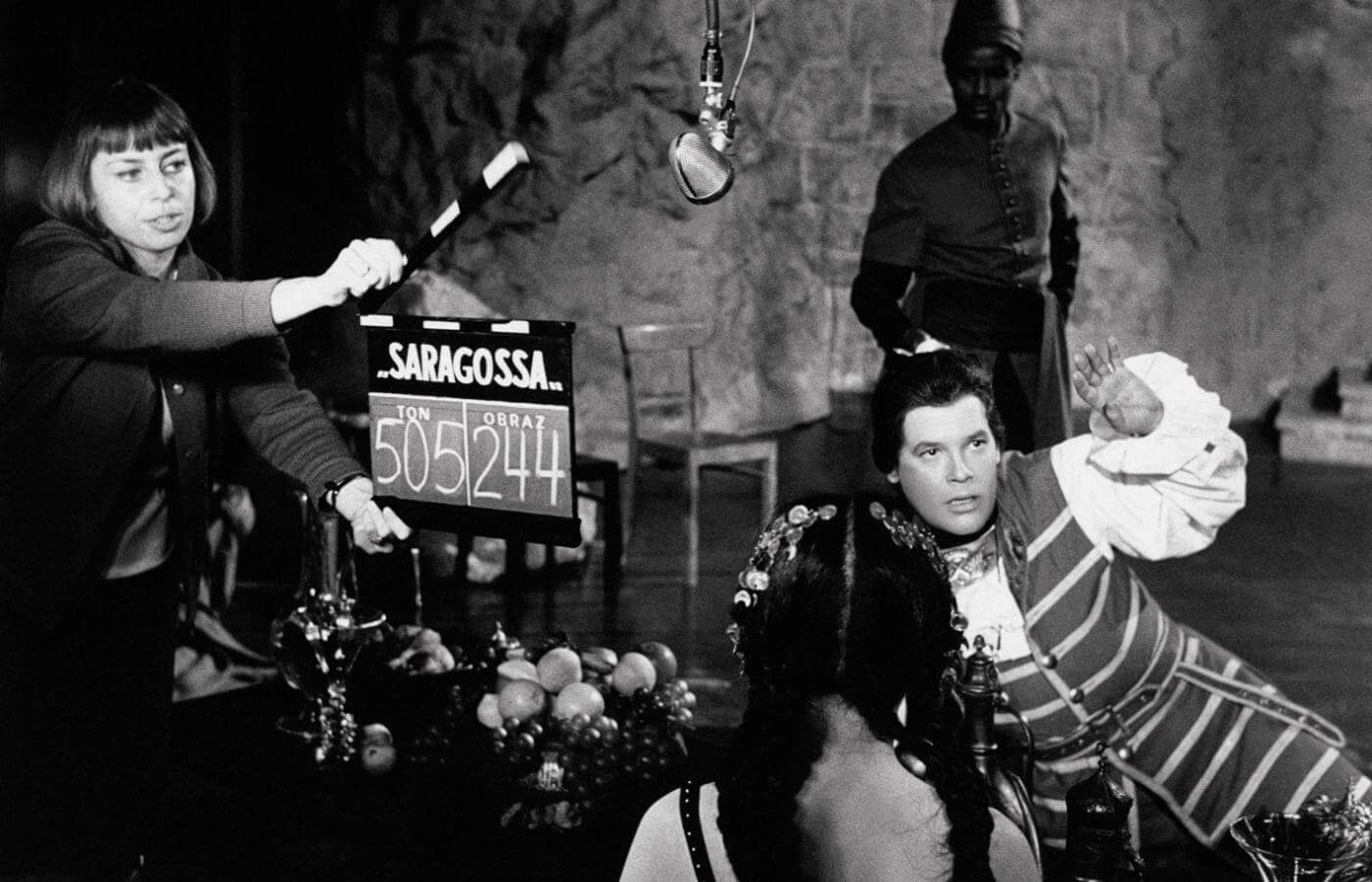
Buñuel even admitted that before 1965 he himself started to create an adaptation of Count Jan Potocki’s novel, which became the foundation of Has’s vision. After seeing the Polish interpretation, however, he decided that his film no longer makes sense – I’m not surprised, Has actually created a truly Buñuel film, in the best sense of the word. Irony mixes with almost maternal tenderness for his characters, it appeals to both rationalists and mystics, as well as simpletons who believe in strange superstitions. Among the seemingly trivial stories about love and imprudence of Spanish youths, there is a reflection on the construction of a film work, human perception, history and the way of perceiving time. However, nothing is intrusive here, everything takes place somewhere behind the scenes – in understatements, pauses between words juicyly accentuated by subsequent authors of the story. The Saragossa Manuscript at times amuses the viewer, and at other times terrifies and stupefies the viewer. It is touching and lazy with too much tenderness to ask an extremely important question in a moment. It is the Polish The Exterminating Angel, The Discreet Charm of the Bourgeoisie, The Obscure Object of Desire.
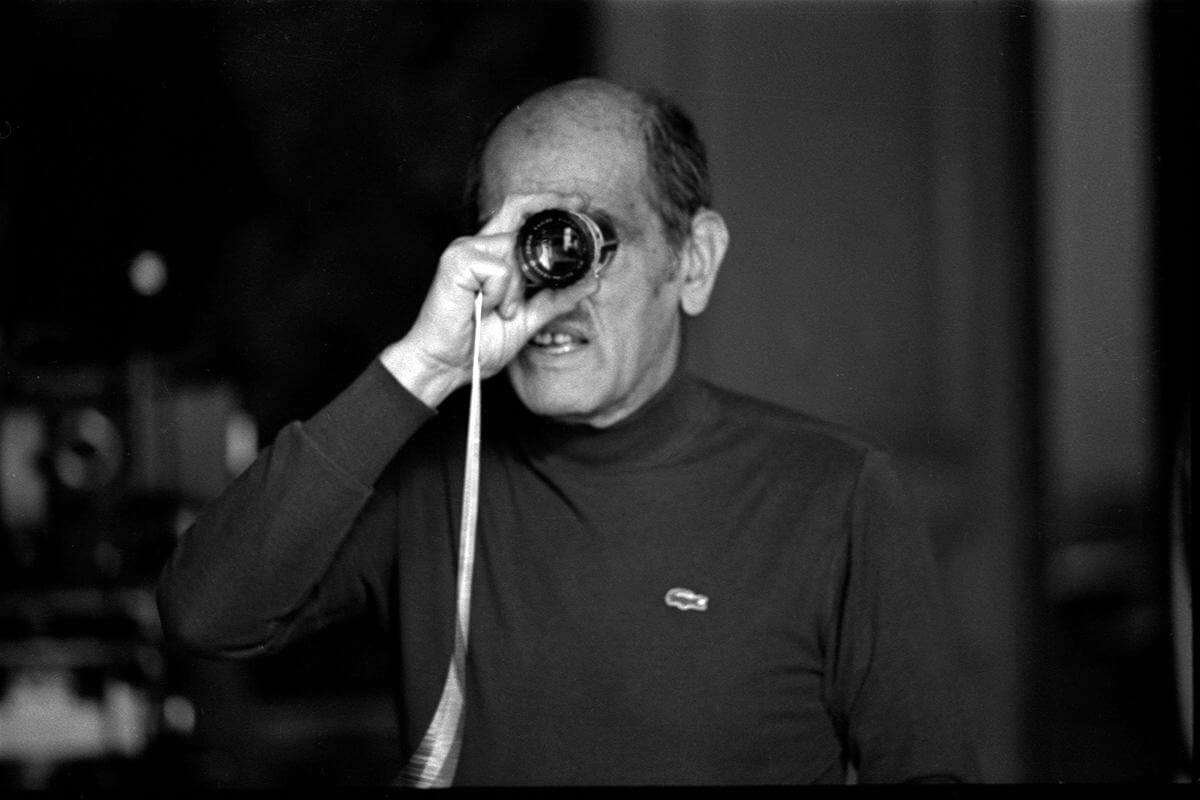
Poland
The 1960s were quite a specific period in Polish cinematography. The Polish School began to slow down, the so-called “third Polish cinema” created by authors who had no personal war experience, and the turbulent, intellectual anti-communist opposition of the 1970s was yet to come. The somewhat forgotten genre of the great historical spectacle has also been revived. In 1960, Aleksander Ford debuted on the screens with his Knights of the Teutonic Order, in 1965 Wajda’s The Ashes appeared, Kawalerowicz created Pharaoh, and Pan Wołodyjowski and The Deluge by Hoffman. All the moviwes were enthusiastically received by the Polish audience.
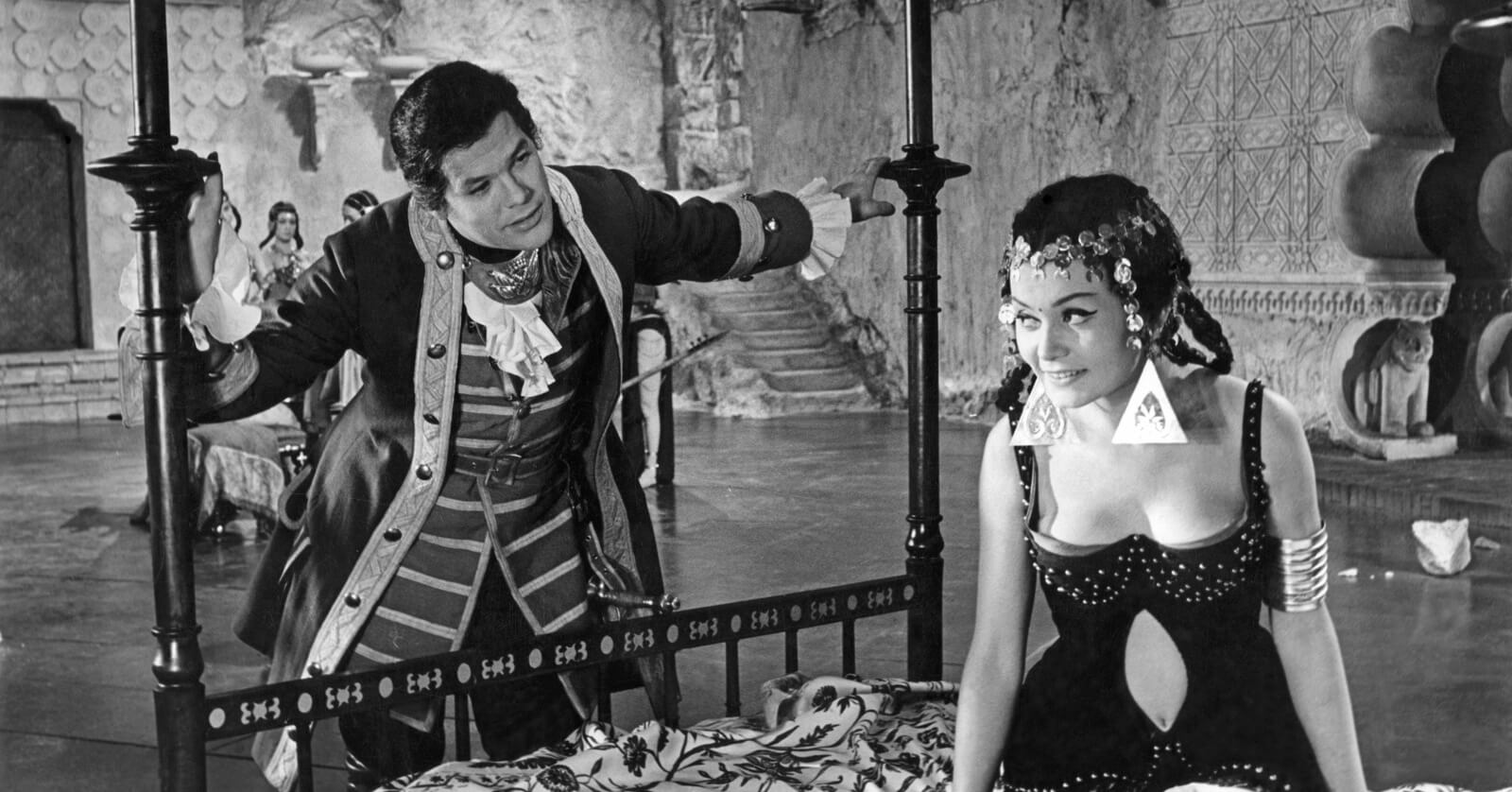
The Saragossa Manuscript is in line with the trend of a great historical fresco based on literature (admittedly not typically Polish, but written by a Pole). Nevertheless, as Stanisław Janicki writes, it enjoyed “less appreciation from the public”. In his History of Cinema, surprisingly little space is devoted to it by Jezy Plazewski, who only attributes to it the function of “an amusing pastiche of a cloak and dagger romance, appealing with ingenious visuals and a review of colorful acting creations”. Anyway, if we look through the press from the 1960s, we will notice that the film was usually devoted to the few lines needed to write a classic review. Only the Film Press Service dedicated a bit more space to it. It is also worth mentioning the later researcher of Has’s cinema, Konrad Eberhardt, who immediately noticed that The Manuscript is a “super diversionary production”.
Critics praised Has quite reassuringly, applauded Skarzynski’s and Myszorek’s scenography, Jahoda’s cinematography, Skarzyński’s costumes and Penderecki’s music. Cinema audiences was also quite satisfied. However, this does not change the fact that The Manuscript was forgotten for many years. It became one of many.
The world
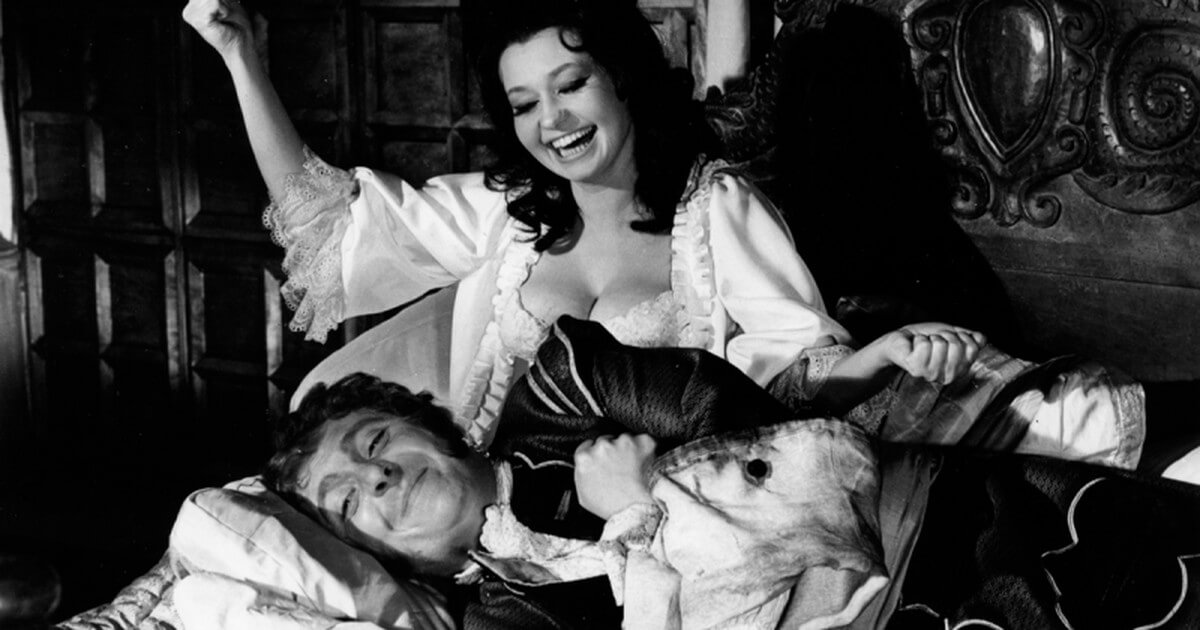
However, copies of Has’s film went abroad. 152-minute version to France, 125-minute version to the United States (distributors had trouble with the three-hour original). French critics reacted positively to the film. In the West, it found its way to the network of art cinemas, gathering intellectual bohemians and seekers of artistic ecstasy (not always free of chemical boosters). The audience response was more than positive. The manuscript became a cult work in many circles, belonging to the same group of film discoveries as Jodorowsky’s El Topo or Lynch’s Eraserhead.
However, it experienced a real renaissance in the 1990s, when Jerry Garcia, the guitarist of the legendary Grateful Dead, saw it at the Centro Cedar Theater in San Francisco. The musician immediately stated that Has’s film was the best piece of cinema he had ever seen and decided that he had to get the uncut Polish version of the film. In 1993, Garcia contacted Edith Kramer, director of Berkeley’s Pacific Film Archive, and offered to sponsor the purchase of the full version of The Saragossa Manuscript. The guitarist’s only condition was to be able to watch him with it friends whenever he felt like it. Kramer began searching for the film, but it turned out that finding it was not the easiest thing to do. After the first setbacks in Poland, Kramer put the project on hold for a while. Eventually, however, she managed to reach Jadwiga Kukulczanka, known abroad as Koukou Chanska. A Polish woman promoting Polish culture in France (and vice versa), in 1984 she founded an agency dealing with the production and distribution of Polish films (Jeck Film). It turned out that they have a film roll of Has in their collection. The Manuscript was repurchased for $6,000 paid by Garcia.
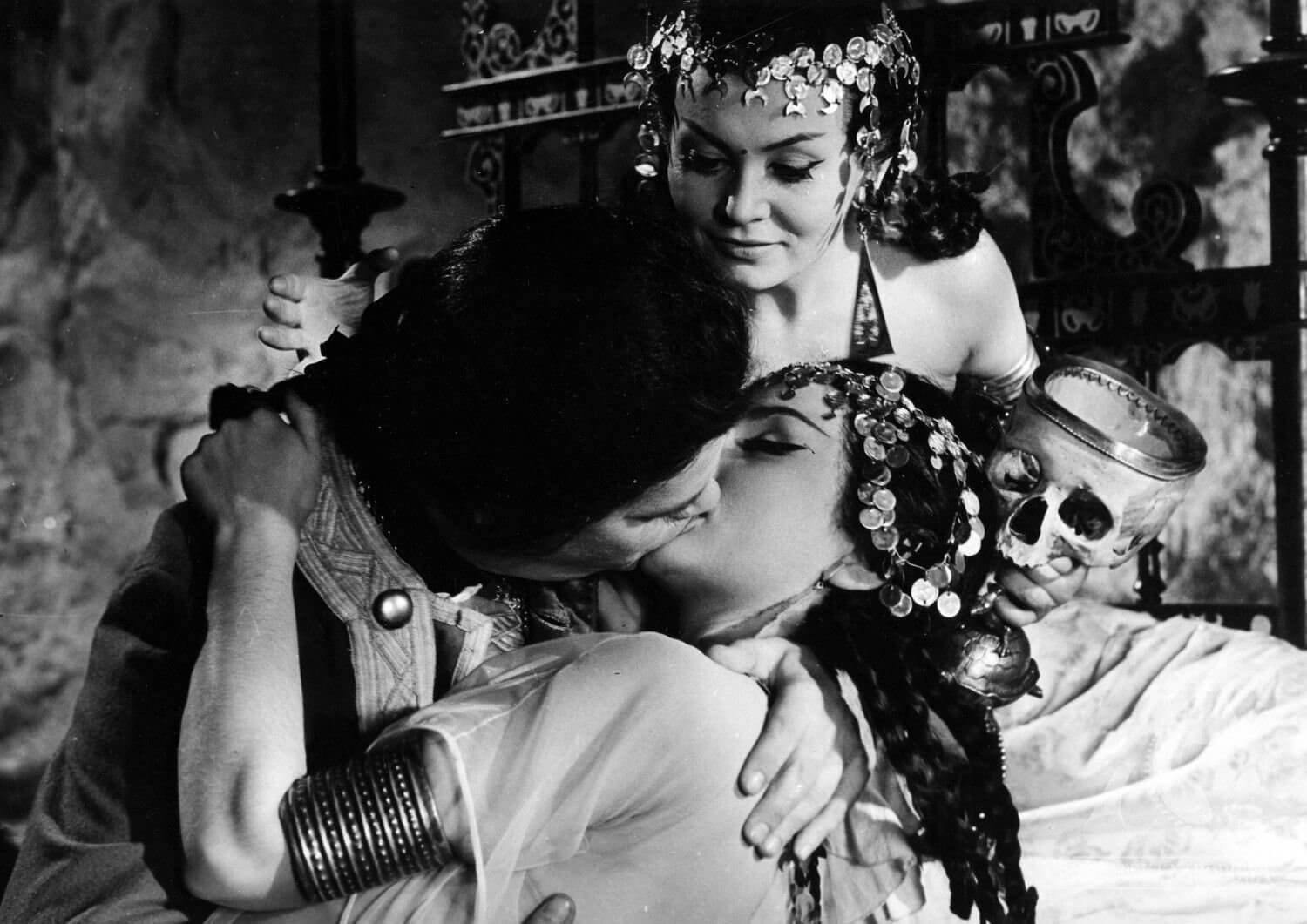
Unfortunately, the guitarist did not live to see the show. The day after Kramer received the tapes, Garcia died of a heart attack. It was August 9, 1995. To make matters worse, the reel purchased from Jeck Film turned out to be a French version from the 1960s, cut by almost half an hour from the original. However, Kramer decided not to give up. Other distributors, Kukulczanka, Martin Scorsese and Francis Ford Coppola, came to the rescue, who also believed that Has’s film was a masterpiece of world cinematography. Together, they reached the only complete copy, which was in the creator’s private collection. After spending $36,000 on a digital reconstruction, in 1997, The Saragossa Manuscript appeared on the screens of New York cinemas in its full version. In honor of Garcia, the American poster for the film was kept in the style of the Grateful Dead covers.
Has’s production is still considered a cult work in the USA, on a par with Lynch’s dream visions, who himself admits to being a great fan of both the film and the Polish director. The manuscript was publicly praised by such intellectuals as Susan Sontag and Salman Rushide. In Spain it was compared to the prose of Borges, in France he was praised for his visionary style worthy of the surrealists. Years later, the “amusing pastiche of a cloak and dagger romance” became one of the most appreciated Polish films. Has, despite the courtesy and jokes that LSD probably helped, must have been pleased with it.
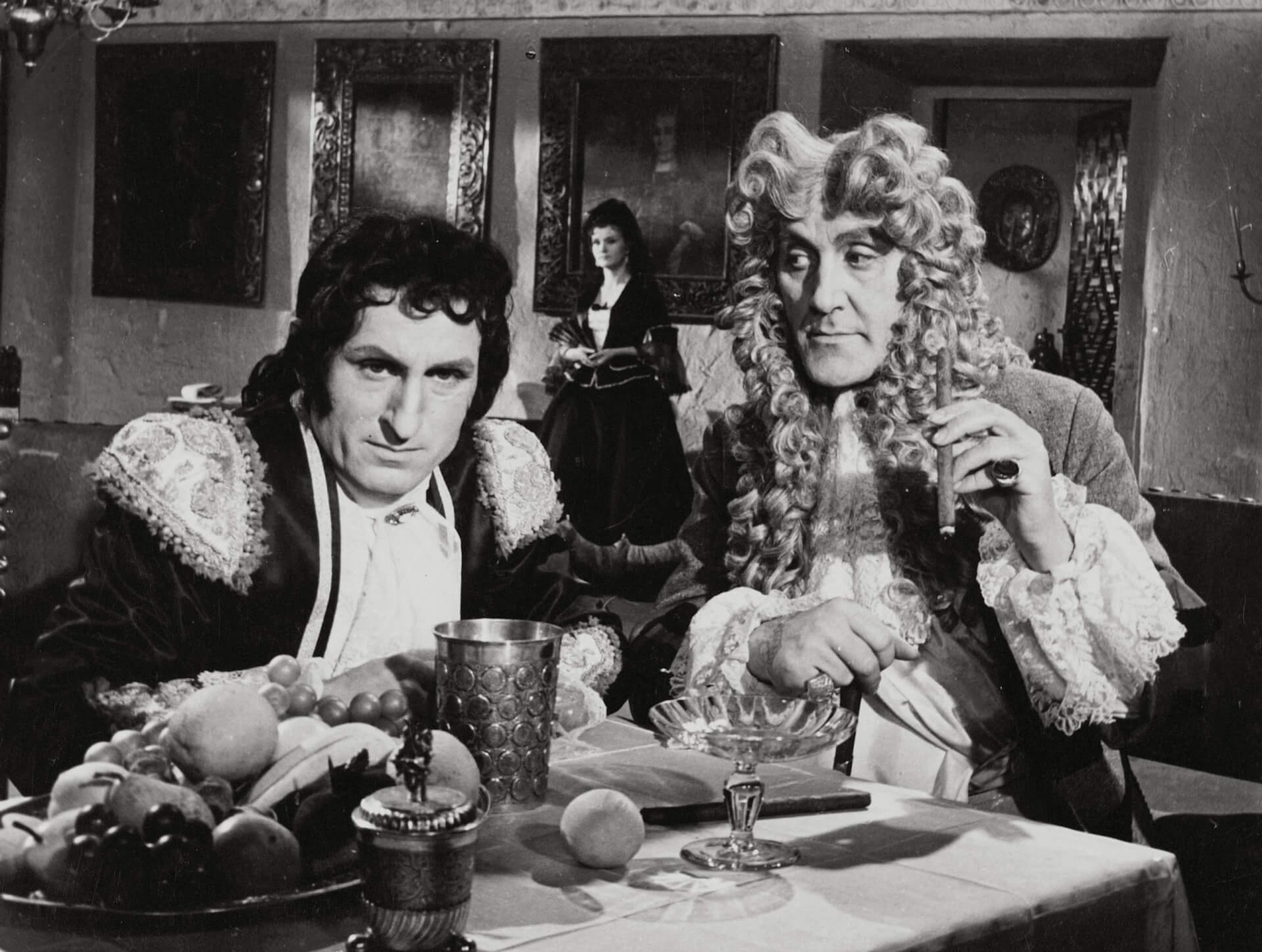
Polish digital reconstruction
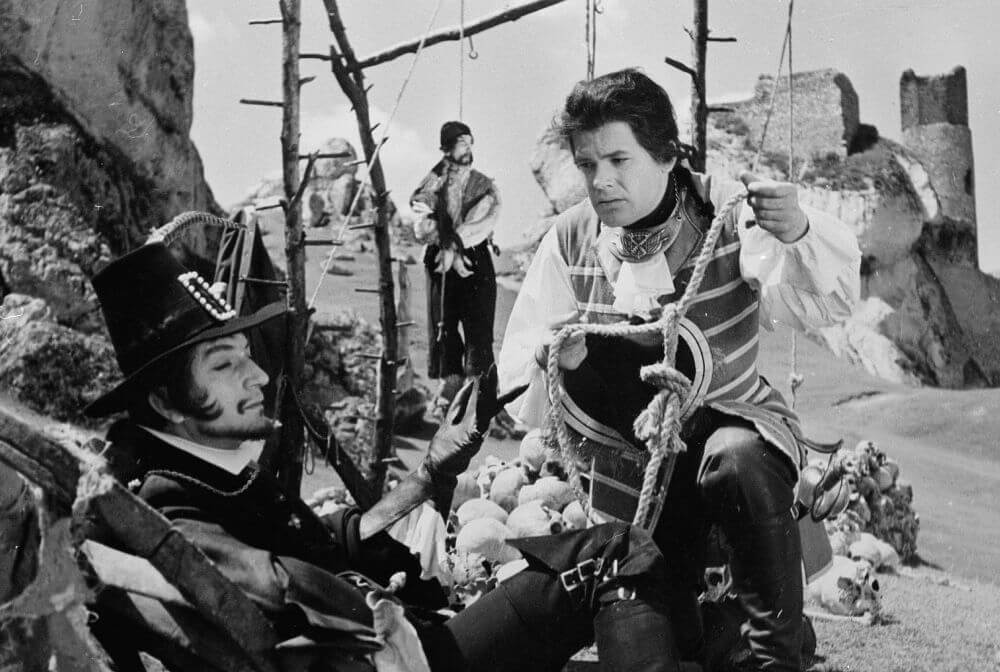
Poland also returned to Has. This is evidenced by the texts written about his films, as well as the reconstruction of his greatest achievements. The process of “renewal” of The Manuscript turned out to be extremely arduous. The materials that the team responsible for digitization had at their disposal were in an extremely poor condition. The length of the film didn’t help either. After a time-consuming scan of all the frames, it turned out that they took up as much as 4 terabytes of disk space (about 850-900 DVDs). A large part of the image damage was removed with the help of automated graphics programs. Another batch disappeared thanks to the interference of software operated by human hands. However, some shortcomings turned out to be so stubborn that separate programs were written to remove them.
Grzegorz Kedzierski, the cinematographer for Personal Diary of a Sinner and Has’s Baltazar Kober Extraordinary Journey, took artistic care of the reconstruction process. He consulted his actions with Mieczyslaw Jahoda (original DP), who fell ill and died during the reconstruction. After cleaning the frames of any signs of damage, Kedzierski and Steve Kent (colorist) sat down to color correction, which consists in optimizing the photos in terms of contrast, modifying the black and white levels, and the appropriate exposure of bright and dark points of the screen. After working on every frame of the film and proofreading the soundtrack, the film is now in distribution and looks better than ever before. This is another opportunity to start a discussion about Has’ cinema.
The game
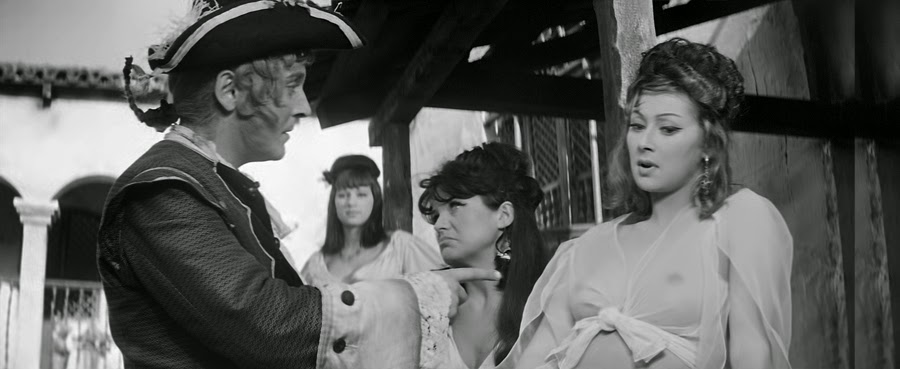
Due to the fact that the number of contexts raised by the The Manuscript far exceeds the scope of a single article, and the film itself is nothing more than a form of a game with the viewer, I decided to join the fun. Instead of a scientific analysis and a sea of footnotes, an alphabetical rhyme without “q” and “y”.
Acting. In the world of The Manuscript, there are virtually no badroles. It is worth mentioning that Zbigniew Cybulski was not initially supposed to play Alfons van Worden, a kind of leading character. Has wanted a French actor for the role. However, his skills turned out to be too weak, and Cybulski appeared on the horizon, playing his only costume role in Has.
Busqueros. Flawless performance by Zdzislaw Maklakiewicz. One of the greatest dogers in the history of Polish cinema. Busqueros would have most likely screwed them all up and managed to get public applause and a cash reward for it.
Cygan Avadoro (Avadoro the Gypsy). The main narrator of the second part of the film and the perpetrator of moving the story to areas completely different from the first part, focused mainly on Alfons van Worden. The story of Avadoro enriches The Manuscript with further contexts and surprisingly ties many threads appearing in Has’s film over the course of three hours.
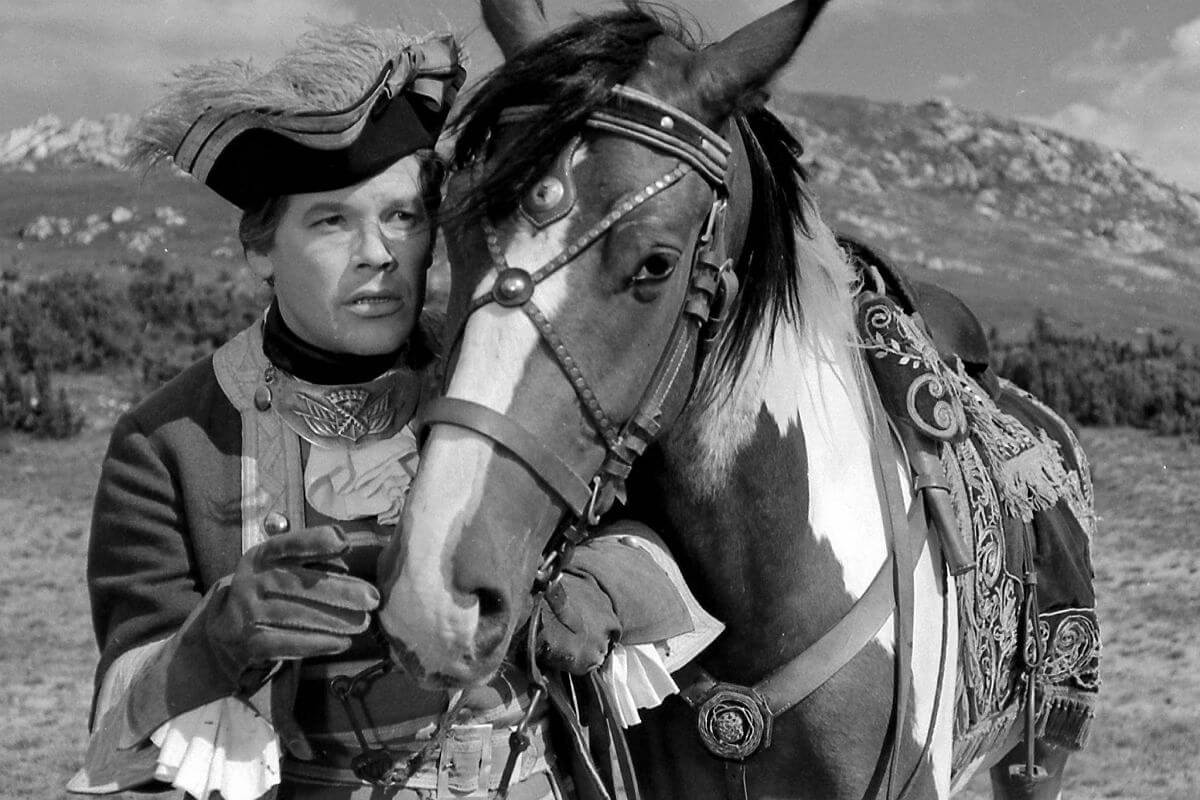
Don Pedro Velasquez and the Kabbalist. Characters played by Gustaw Holoubek and Adam Pawlikowski. A kabbalist and a realist, symbols of two different life attitudes, but also heroes different from all the others, standing as if above the order of history. In the clashes between them, there is a war for the fate of Alfons van Worden’s soul. The roles are basically small, but perfectly written.
Emina and Zibelda. Iga Cembrzynska and Joanna Jedryka. Both in their twenties, both in the skimpy costumes of Moorish princesses who deceive Alfonso van Worden. Need to say more?
F(Ph)ilosophy. Appears in the film in a very intelligent way. There is no intrusiveness in some productions. Has and Kwiatkowski perfectly lay out the accents scattered after Potocki’s enormous work and add their own reflections. The manuscript contains the central motifs of Has’s philosophy of cinema – a reflection on time, the presence of man in history and storytelling as what, in a way, constitutes his existence.
The Game with the viewer. The Manuscript tests the viewer’s patience and perceptual abilities. By multiplying the senses, unusual events and levels of the story, it causes us to get lost and wonder what is real and what is fantasy. This puts us in a situation analogous to that of Alfons van Worden himself. This movie is partly about us, we have to decide what we just watched.
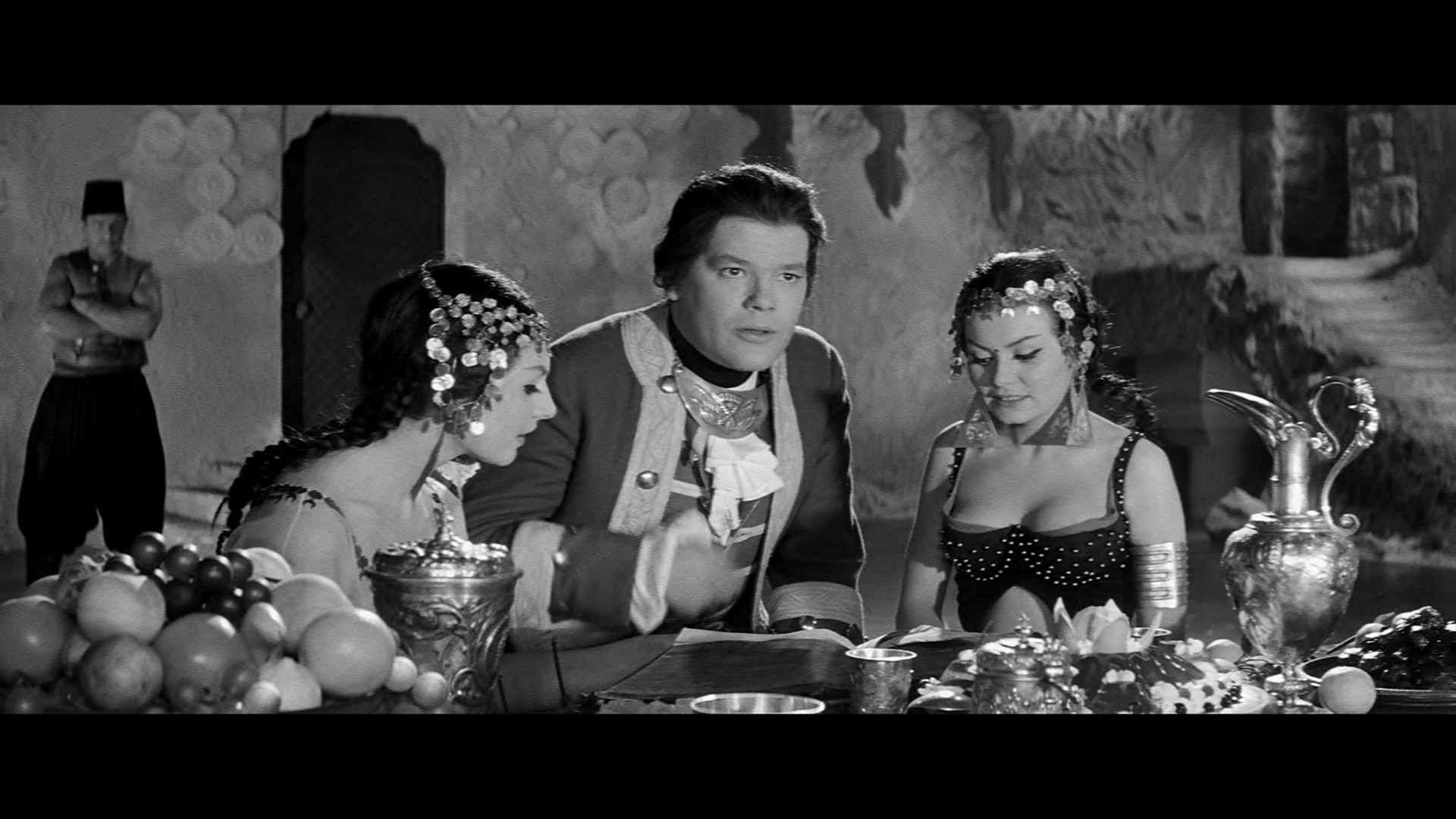
Humor. This one appears in The Manuscript even when there are naked skulls lying around, and demons are raging outside the windows, beating at the souls of the heroes. The finale of some stories really brings a lot of joy to the viewer.
Irony. Has’s film is full of it. However, this is not a stupid irony used for show. This is the same school of “pin sticking” used by Luis Buñuel. Nobody gets stabbed if they don’t deserve it, and if they deserve it, the stabber’s arguments are so accurate that we don’t mind. The Manuscript also has an ironic approach to the film material itself and genre. You could call it a joke with a surprisingly serious moral.
Jahoda. The operator’s work done by Mieczyslaw Jahoda is the quintessence of Polish solidity. In 1960, he photographed the first Polish panoramic film, Aleksander Ford’s Knights of the Teutonic Order. He transferred the experience of this cooperation to the world of Has. Thanks to this, The Manuscript, despite the implementation momentum, still remains an extremely original reality, recognizable at first glance.
K(C)ostumes. Lidia and Jerzy Skarzynski created over two hundred original costumes for characters as diverse as 18th-century adventurers and Moorish princesses. Each costume is a small work of art, and for women’s dresses I will thank them separately a few letters below.

Labyrinth. The Saragossa Manuscript is a cinematic labyrinth that draws the viewer into a multi-level game. Some say that leaving it is possible because the film’s finale leaves the viewer in no doubt. I belong to the latter group. I believe that wandering is the very meaning here, not the way to the goal.
Music. Krzysztof Penderecki shows off his great artistry, but also his distance and humour. At times it makes us feel real horror, at other times we smile only because the sound accurately concludes the situation in which the characters find themselves.
iNnovative. At the time of its premiere, not only Polish, but also foreign critics emphasized that in the history of cinema it is hard to find a film similar to he Saragossa Manuscript. Has’s vision opened up new horizons and became an inspiration for many artists, including the greatest ones.
Adaptation. The work done by Has and Kwiatkowski is the quintessence of working on the text. Despite the fact that many of Potocki’s stories were not included in the film version, the creators were able to preserve the spirit of the original and, moreover, enrich it with new, valuable reflections. The Manuscript is a successful adaptation of a work that for many years was considered impossible to adapt to the screen.
Breasts. Yes, it’s hard for me to find a Polish film with so many beautiful female breasts. Skarzynski’s costumes reveal them completely or emphasize their features. However, there is no vulgarity or cheap sensation in all this. Breasts in Has’s world are pure poetry, but it seems to me that this is a topic for a separate text.
Realism. Is there such a thing? In the world of The Manuscript, this question resonates particularly strongly. The answers must be separated by both Alfons van Worden and the viewer himself.
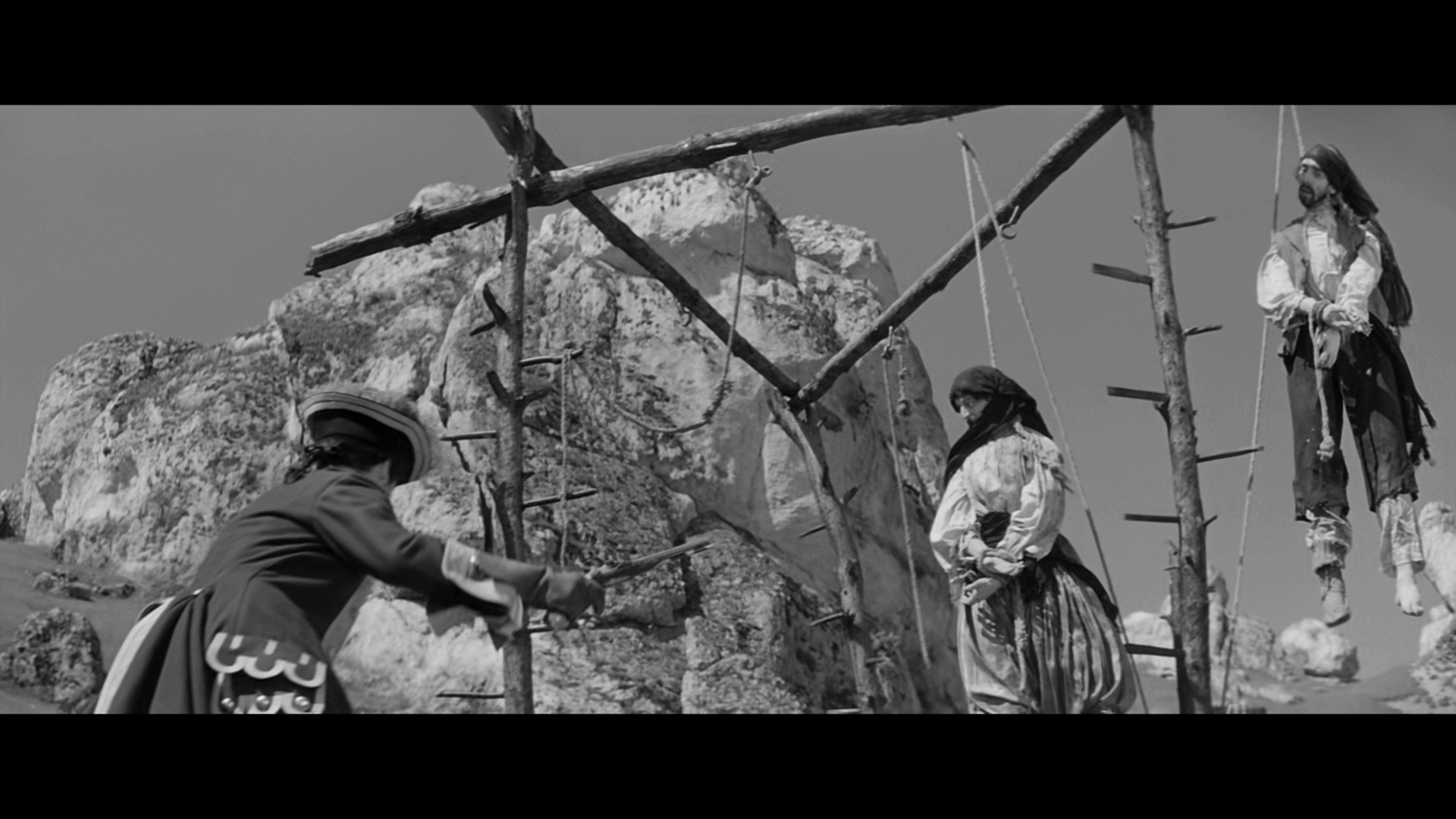
Scenography. Jerzy Skarzyński and Tadeusz Myszorek create one of the greatest stage design masterpieces in the history of Polish cinema. During filming in Wroclaw, a replica of 18th-century Madrid was erected, which quickly became a tourist attraction. The cost of the replica and decorations that appeared in the film amounted to over seven million zlotys. The Jura Krakowsko-Czestochowska, which managed to deceive the Iberians themselves, served as the Spanish landscapes. The stage design of The Manuscript is a clash of baroque, surrealism, mannerism and humorous variations on them. Work of art.
Mystery. It accompanies almost the entire film. Even when we fall asleep with a seemingly trivial story, we feel the horror of the situation in which Alfons van Worden finds himself. Following the maze, we wonder what we will find around the next bend and whether we will ever be able to solve the riddle served by the creators.
Delusion. Is the presented world a dream, a legend, a made-up story? This question is equivalent to the one about the realism of the presented world. There are no certain things in The Manuscript. We never know whether we are facing a ghost, a substituted actor or a character of flesh and blood.
Venta Quemada. The inn that is the epicenter of the film’s mysterious events. A place of constant return for van Worden and spectators. It is here that the meanings multiply, the center of the labyrinth of The Saragossa Manuscript is located. Once we see them, they will be remembered forever.

Many levels. That is, the main element of disorientation used in the game with the spectator. There is no single story told here. Here, story chases story, which turns out to be part of another story. Extremely intriguing and, overall, surprisingly coherent.
18th century. A completely unprecedented thing for Polish cinema to transfer the action of the film to the distant past of a foreign country. At a time when Polish artists are trying to deal with the situation in which a man finds himself in the reality of the People’s Republic of Poland or are escaping towards historical frescoes like the Teutonic Knights or The Deluge, Has goes completely against the current. This move pays off.
Golden Duck. In 2006, on the occasion of the 60th anniversary of Film Mgazine, readers chose The Manuscript the most important Polish film of the last sixty years. Let this be the final recommendation to go on a journey with Alfons van Worden.
Sources:
Stanisław Janicki, “Polish Film from A to Z”.
Marcin Maron, “The Drama of Time and Imagination”.
Jerzy Płażewski, “History of Cinema”.
Konrad Eberhardt, “Wojciech Has”.
Foreword to the Blu-ray release.
Internet sources (foreign adventures of “The Saragossa Manuscript”).

